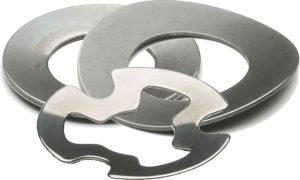
Springs come in different shapes and sizes. While most of them consist of coiled pieces of metal, others do not. Some of them consist of a flat, ring-shaped piece of metal. Known as flat springs, they can store mechanical energy like all other springs. Flat springs are simply flat, whereas other springs are not.
Overview of Flat Springs
Flat springs are mechanical energy-storing devices that are characterized by a flat shape. They are typically stamped using flat stock. Most flat springs are made of steel. You can find them in stainless steel and carbon steel. Stainless steel flat springs are better protected against corrosion, whereas carbon steel flat springs are stronger.
Not all flat springs feature the same design. Most of them do, in fact, consist of a ring-shaped piece of metal, but their nuances between the different flat springs. Some of them are curved or wavy, for instance. They are still mostly flat, but they have curves or waves that result in an irregular waved surface.
Other flat springs have an overlap. An overlap means that the piece of metal from which a flat spring is made goes over itself. This overlapping section of metal allows flat springs to compress under a load.
How Flat Springs Differ From Mechanical Wire Springs
Most springs can be classified as either flat or mechanical wire. As previously mentioned, flat springs are flat pieces of metal that are capable of storing mechanical energy.
Mechanical wire springs, on the other hand, are coiled pieces of metal. They are often made of the same stainless steel or carbon metal as their flat counterparts. Mechanical wire springs, though, are coiled.
There are two primary types of mechanical wire springs: extension and compression. They both feature a coiled design, but they are designed for different applications. Extension springs are used in applications involving a pulling force. When exposed to a pulling force, extension springs will extend and become longer.
Compression springs are used in applications involving a compressive or pushing force. When exposed to a compressive force, they’ll become shorter. Extension and compression springs are classified as mechanical wire springs. They consist of coiled meta; extension and compression springs are simply designed for different applications.
In Conclusion
Springs come in different shapes and sizes. Extension and compression springs are coiled, whereas flat springs are flat. They aren’t made of pieces of coiled metal. Rather, flat springs are stamped using flat stock.
